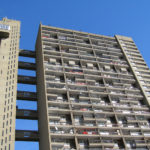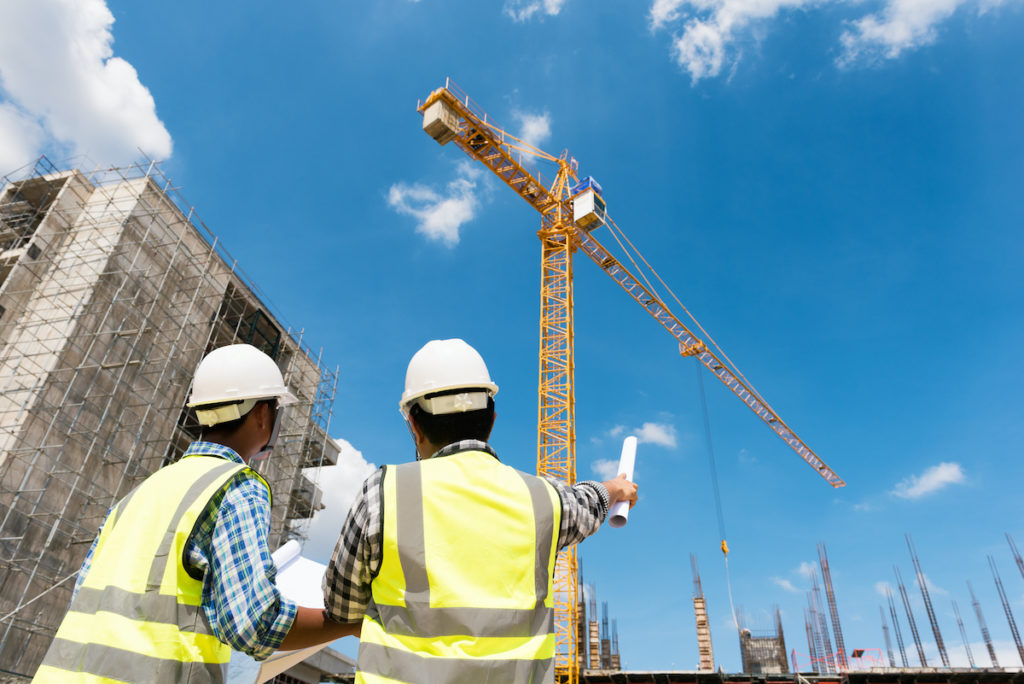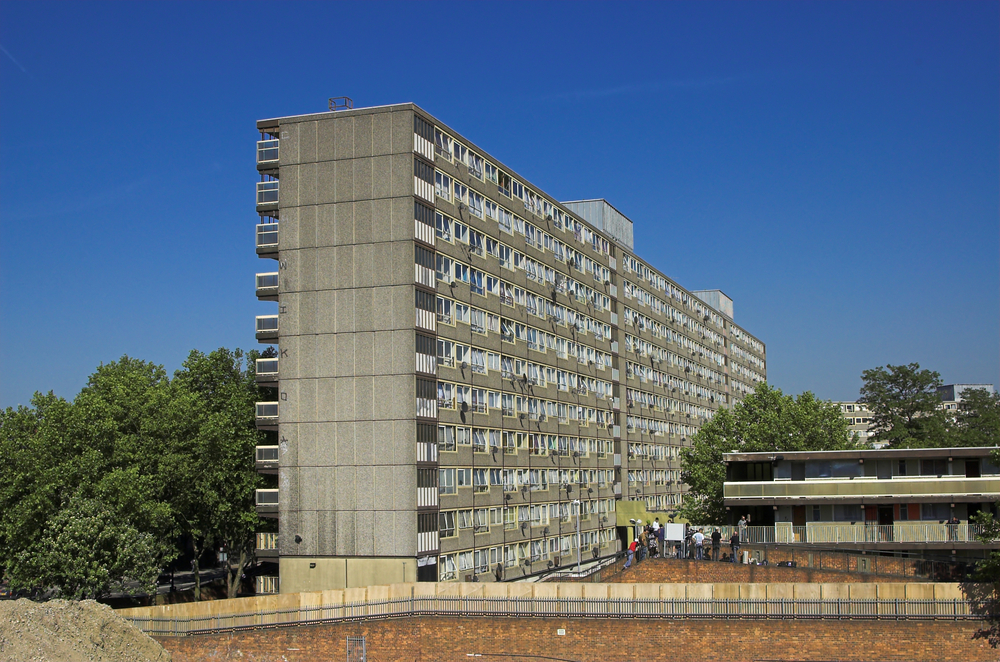
High-rise buildings are a key feature of urban living, making up a large proportion of cities’ skylines and architecture. The Council on Tall Buildings and Urban Habitat (CTBUH) found a 464% increase in high-rise buildings standing over 200 meters from the year 2000 to 2018, reflecting an acceleration of this building type in response to an expanding urban population (CTBUH, 2019). Housing is consistently considered a determinant of health, but little is known about the impact of high-rise buildings on mental health and social well-being.
Housing factors have been discussed as both directly and indirectly influencing wellbeing. For example, direct housing factors such as quality of housing and floor level variables have been associated with increased distress, as well as more indirect effects such as housing interfering with opportunities to socialise (Evans et al., 2003). Nonetheless, no systematic review of the evidence has been conducted.
To address this gap, Barros and colleagues (2019) conducted a systematic review to investigate the current evidence base on the relationship between high-rise buildings, social wellbeing and mental health.

There has been a rapid increase in high-rise buildings in response to more people moving to urban settings but what are the effects on social wellbeing and mental health?
Methods
The authors conducted their review following the PRISMA guidelines. They searched databases MEDLINE, Embase, PyscINFO, Scopus, SciELO and Web of Science between August and October 2016. No limits were set on language, publication date or study design.
Inclusion criteria
Studies had to be carried out in urban settings, participants were community living (as opposed to institutionalised living) and the study had to include two or more of the study variables (high-rise buildings and social wellbeing and/or mental health).
Exclusion criteria
Theoretical papers and reviews were excluded as well as papers that only reported associations between neighbourhoods with high-rise buildings and social wellbeing and/or mental health.
The authors initially screened titles and abstracts for eligibility and then retrieved full text papers deemed eligible. Multi-disciplinary team members were paired up to reduce potential bias, with researchers independently reviewing articles and then discussing a paper’s eligibility in their pairs. A third reviewer resolved any disagreements.
The initial search yielded 4,945 papers, and following screening, 23 studies met eligibility criteria for the review.
Data extraction
A pre-piloted data extraction form was used to extract relevant data including high-rise building attributes and social wellbeing and mental health outcome measures.
A quality assessment matrix was created and studies were rated between 0-2 on:
- appropriateness of the study design;
- presence of a clear definition and operationalisation of the three variables (high-rise residential buildings, social wellbeing and/or mental health);
- quality of the data collection; and
- quality of the analysis.
The authors used the following working definition of a high-rise residential building: “A building characterised by having at least four storeys containing private residences”.
Results
Characteristics of the included studies
The majority of the included papers were conducted in high-income countries; most were cross-sectional in design with only one study using longitudinal/experimental methods. The mean quality assessment score of the 23 papers reviewed was 6 (SD=1). Seven papers did not provide a definition of high-rise buildings.
Results, summarised below, were broken down into four subsections: semi-public spaces, floor level, house type and streetscapes.
Semi-public spaces, social wellbeing and mental health
The authors defined semi-public spaces as shared spaces between residences of a high-rise building, such as shared entrances.
Dark and narrow staircases and lifts were likely to reduce social interactions and associated social networking. One study found that the majority of social interactions within high-rise buildings take place in corridors and another found a positive association between physical attributes of semi-public spaces and quality of life. A separate study found that, compared to private residences, communal spaces close to high-rise buildings and shared entrances were associated with a perceived sense of anti-social behaviour, lack of control and security concerns, which were associated with poorer mental health.
Floor level, social wellbeing and mental health
Two studies found that living on higher floors was associated with better social wellbeing such as greater social contact. Another study also found that living on the ground floor was associated with concerns over privacy, safety and lack of control.
In contrast, a separate study found that primary care patients living on the fifth floor or above were twice as likely to experience mental health symptoms as lower floors. Additionally, one study failed to find an association between floor level and symptoms of mental health problems.
House type, social wellbeing and mental health
Thirteen statistically significant associations were found across studies investigating house types (high-rise vs. private housing) and social wellbeing and mental health. Eleven of these associations found worse mental health and social wellbeing outcomes related to living in high-rise residential buildings compared to alternative housing. However, one study found that mental health problems were more strongly correlated with housing location rather than housing type, reflecting that location may confound relationships found.
The authors speculated as to why these associations were found. They proposed that the perceived stigma of residing in a high-rise building may result in negative social effects and explain the poorer outcomes found in several studies, rather than the physicality of the building itself.
Streetscape, social wellbeing and mental health
The authors define streetscapes as a term to describe all elements related to the appearance of a street in which a high-rise building is located.
Only three of the included papers investigated the role of streetscapes on social wellbeing and mental health, all of which seemed to suggest that high-rise streetscapes are associated with a reduced sense of control and increase in perceived anti-social behaviour.

House type, floor level, and spaces intrinsic to high-rises are associated with social well-being and mental health.
Conclusions
The authors highlighted several methodological issues of the papers assessing the associations between housing, social wellbeing and mental health, suggesting there has not been much progress since the last systematic review in 2003.
Despite this, the authors speculate that:
although there is no consensus on how different housing variables impact on social wellbeing and mental health, they are inter-related.

Despite the lack of high quality evidence, the authors note the inter-relation between residential buildings and social wellbeing and mental health.
Strengths and limitations
Strengths
- Authors comprised of a multi-disciplinary research group including architects and epidemiologists, who brought specific expertise including knowledge of housing definitions and research methodology
- A quality assessment tool was used to rate the quality of included papers on their design, definitions and data collection and analyses methods
- This review highlighted key gaps in the literature including the lack of longitudinal and experimental methods investigating this area.
Limitations
- Authors noted a lack of a clear definition of high-rise buildings, reducing the validity of findings and comparisons between building types due to the probable variation in definitions
- The majority of studies included in the review were cross-sectional in design, so the direction of associations is unclear, and there are issues such as self-selection bias
- The confounders that the included studies controlled for were not reported, making it less clear on the quality and validity of the reported associations
- Search terms and definitions were searched using English-language definitions and are likely culturally bound so the generalisability of findings to other contexts is unclear
- Authors did not register their systematic review on PROSPERO (a widely recognised prospective systematic review registration database) before they began.

More stringent research is required to understand the aspects of our built environment that are important in supporting positive social wellbeing and mental health.
Implications for practice
This review highlights the likely interactions between housing, social wellbeing and mental health. In light of this, the authors call for more cross-disciplinary collaborations to improve our understanding on how the built environment can influence our social wellbeing and mental health.
Many of these findings point to social factors, such as stigma surrounding living in a high-rise building, which likely contribute to associations between high rise buildings and poorer mental health outcomes. This may suggest a potential benefit of clinicians extending the consideration of social and environmental factors to include where a person resides.

Many of these findings point to social factors, such as stigma surrounding living in a high-rise building, which likely contribute to associations between high rise buildings and poorer mental health outcomes.
Conflicts of interest
None.
Links
Primary paper
Barros, P., Fat, L. N., Garcia, L. M., Slovic, A. D., Thomopoulos, N., de Sá, T. H., … & Mindell, J. S. (2019). Social consequences and mental health outcomes of living in high-rise residential buildings and the influence of planning, urban design and architectural decisions: A systematic review. Cities, 93, 263-272. [Abstract]
Other references
CTBUG (2019) Tall Buildings in Numbers. CTBUG Journal, 1, 48-49.
Evans, G. W., Wells, N. M., & Moch, A. (2003). Housing and mental health: a review of the evidence and a methodological and conceptual critique. Journal of social issues, 59(3), 475-500. [Abstract]
Photo credits
- Photo by Gunnar Ridderström on Unsplash
- Photo by Warren Wong on Unsplash
- Photo by Anurag Arora on Unsplash
- Photo by Road Trip with Raj on Unsplash
- Photo by Matteo Catanese on Unsplash

Thanks for summarising this paper. It’s an interesting question but clearly one where the available evidence is very mixed. Prompts me to consider whether there is equivalent research on mental health and well being of people working in high rise buildings. One can imagine many confounders with that too.
thank you very much for your research. i have been concerned about the health implications and risk assoicated with tall buildings, especial individuals living in soical isolation. As you the The London Plan, housing and planning development, i am against tall buildings/tower blocks. Third floor is the limit for me, after i feel dizzy and sometomes the force of wind knocks me back. I was wondering have you done any studies on high altitude sickness?